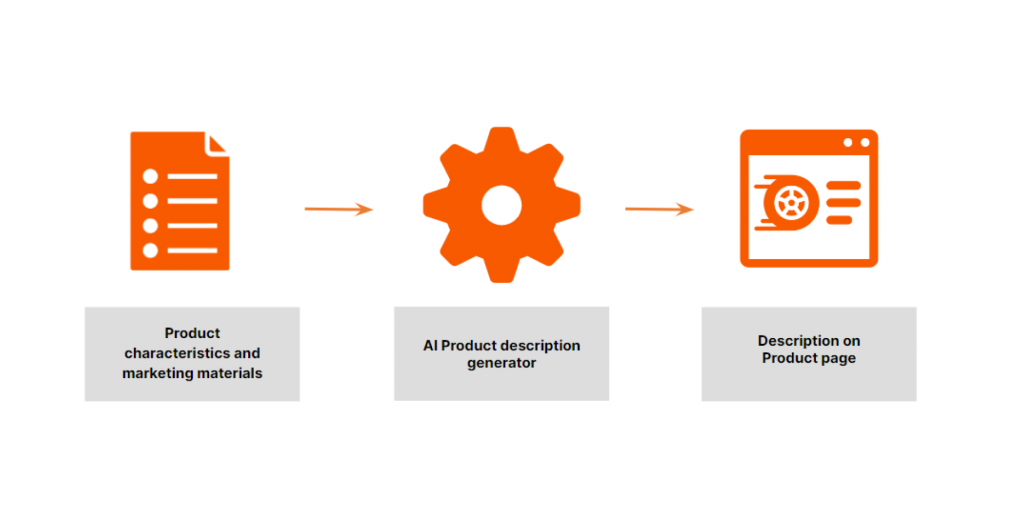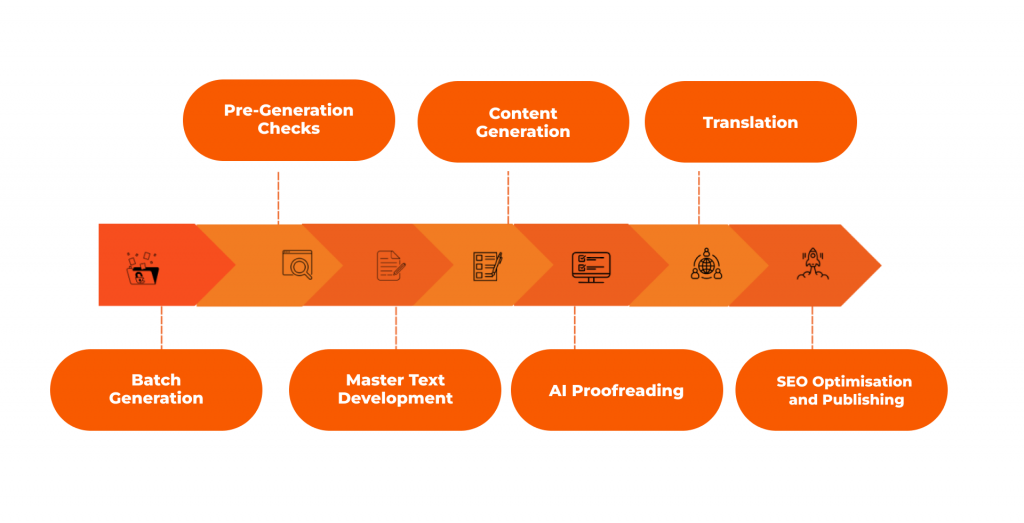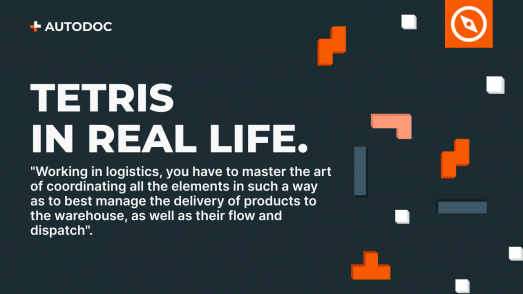Hybrid сopywriting: amplifying productivity while preserving quality and the soul of creativity

The expansion of the digital horizon with the rise of AI services led some to predict the end of traditional copywriting, envisioning a future where the human touch would be lost under waves of algorithms. However, our journey through the ever-evolving landscape of artificial intelligence has revealed a surprising discovery: human creativity has not become obsolete, but rather transformed. Through our experiments and experiences with AI, we have discovered a new paradigm in content creation called hybrid copywriting. This approach combines the precision of AI with the unique insight of the human mind, proving that the future of copywriting isn’t about replacement, but about evolution and collaboration.
Prelude to hybrid innovation at AUTODOC
Challenging predictions of a future devoid of human creativity, AUTODOC’s SEO and Content Department embarked on an exploratory journey to harness AI for various content generation tasks, aiming to enhance work efficiency and output quality. Inspired to push the boundaries, AUTODOC developed and programmed a tool based on ChatGPT 3.5 and 4 technology, enabling the mass generation of product descriptions. This innovative approach allowed for the creation of up to 200 product descriptions per batch, with 100 descriptions being generated in just 50 minutes, utilising a single prompt with variables to cater to up to 200 products.

To critically assess the quality of the texts mass-generated by AI, AUTODOC introduced the AI Quality Evaluation (AIQE) model. This model was meticulously designed to ensure that AI-generated content not only adhered to linguistic standards but also maintained a high informational value and alignment with the original prompts. The AIQE project commenced in June 2023, with the development of a set of preliminary criteria for evaluating AI content. These criteria included six error categories, encompassing both industry-standard concerns like grammar errors and novel categories specifically tailored for AI content, such as factual correctness. The AIQE model operates on a simple premise: a flawless text earns a 100% quality score, with deductions applied for errors based on their severity and category. A minimum quality threshold was established, with content needing to surpass this benchmark to be deemed acceptable by AUTODOC. Content length and language nuances were also incorporated into the model to adjust the minimum acceptable quality threshold.

However, challenges emerged. The batch quality of the texts was low and inconsistent; one product description might score 90%, while another could plummet to 0%. Misinterpretations of information taken from AUTODOC’s website led to inaccuracies, such as mislabeled product features or repetitive content that dulled the user experience. The time required to evaluate these AI-generated descriptions often surpassed the time it would take to write them from scratch. These obstacles underscored the limitations of relying solely on AI for content generation, propelling AUTODOC towards a more nuanced solution: hybrid copywriting. This approach promised not just to mend the gaps identified but to forge a path where the synergy between human ingenuity and AI efficiency could elevate content creation to new heights.
Building the hybrid framework
Hybrid copywriting isn’t just a methodology; it’s a philosophy of balance and synergy. It represents a seamless integration of the computational power of AI with the intrinsic human capacities for empathy, cultural nuance and creative storytelling. AUTODOC’s pioneering approach uses AI to do the analytical heavy lifting – keyword optimisation, content structuring and data analysis – freeing human copywriters to infuse each piece with creativity, emotional depth and a compelling narrative voice. This collaborative approach has unlocked unprecedented levels of efficiency and creativity, enabling the production of content that resonates on a human level while being crafted with algorithmic precision.
In practice, this harmonious blend of technology and human skill has led to remarkable improvements in productivity. Our metrics show that hybrid copywriters can produce a standardised blog article of 700 words on a common topic in approximately 40 minutes. This is a task that would typically take around 100 minutes using traditional copywriting methods. Thus, we observe up to a 60% increase in productivity, which translates directly into cost savings in content creation. When it comes to product descriptions, the contrast is even more striking. A single product description crafted from scratch could take between 40 to 60 minutes, yet our hybrid system enables the production of 5 to 6 texts within the same timeframe. This efficiency not only accelerates the content creation process but also ensures that our quality remains consistent, as each description is honed with the same attention to detail and brand alignment.

A case study in innovation: AUTODOC's Journey
AUTODOC’s foray into hybrid copywriting was born out of both necessity and foresight. Faced with the need to maintain its commitment to quality content while optimising costs, the company began to explore the potential of AI. Initial experiments with fully automated content generation revealed a quality gap that AI alone could not fill, leading to the strategic decision to adopt a hybrid approach. This model not only met AUTODOC’s stringent requirements, but also set a new benchmark for efficiency and quality in content creation.
To operationalise hybrid copywriting, AUTODOC established a detailed and efficient process, ensuring that the fusion of AI capabilities and human expertise consistently produces high-quality content.

The hybrid copywriting process at AUTODOC is meticulously structured into distinct stages:
Batch Generation: Product descriptions are created in batches, focusing on 20 products that share a generic-brand connection.
Pre-Generation Checks: Prior to content generation, an AI operator verifies each product for availability, checks for duplicates, and confirms whether the item has been discontinued.
Master Text Development: The AI operator conducts extensive research to craft a master text. This foundational document informs the creation of other product descriptions within the same generic-brand nexus.
Content Generation: Utilising the master text, subsequent product descriptions are generated, ensuring consistency and depth across the series.
AI Proofreading: The content undergoes a rigorous proofreading process with the aid of tools like DeepL AI writer, Antidote, and similar platforms, aiming for linguistic precision and coherence.
Translation: Product descriptions are translated into target languages using a semi-automated tool powered by the DeepL API, blending AI efficiency with human oversight for accurate and culturally relevant translations.
SEO Optimisation and Publishing: The SEO team integrates HTML tags into the content, optimising it for search engines before publishing the descriptions on the product pages.
The story of hybrid copywriting at AUTODOC is a testament to the power of human-machine collaboration. It’s a vision that transcends the binary opposition of creativity versus technology and instead embraces a future where each enhances the other. As this innovative approach continues to evolve, it promises not only to redefine the landscape of content creation, but also to inspire a new generation of writers, strategists and creators. This is not the end of the story, but the beginning of a new chapter in the annals of digital creativity. A chapter in which the fusion of human insight and artificial intelligence opens up limitless possibilities for the art of copywriting.
A forward-looking conclusion on hybrid copywriting
As AUTODOC continues to navigate the rapidly evolving landscape of AI and content creation, our commitment to innovation remains unwavering. Incorporating the latest AI tools into our processes isn’t just about keeping up with technological advances, it’s about setting new standards in efficiency and creativity. Our experience with hybrid copywriting reinforces our belief in the irreplaceable value of human creativity, which we see as the core driver of originality and emotional resonance in content.
In this journey, the business benefits of adopting AI are clear. Tasks prone to repetition and manual labour are efficiently managed by AI, enabling cost savings and allowing our team to focus on high-value creative tasks. This approach ensures that AUTODOC remains competitive and innovative in a digital-first world.
In conclusion, AUTODOC is ready to further explore the synergies between human creativity and AI, firmly believing that the future of content creation lies in the harmonious collaboration between the two. By continuing to integrate the best AI tools into our workflow, we aim to enhance our creative capabilities and make our content not only more efficient and scalable but also deeply human and impactful. The way forward is a partnership between man and machine, leading us to an exciting future with unprecedented possibilities of content creation.
Authors: Denis Laptenkov (Head of Translations), Tania Kichuk (Team Lead ILS)
Related stories

Tetris in real life.
Working in logistics, you have to master the art of coordinating all the elements in such a way as to best manage the delivery of products to the ware...

Education As A Determining Factor For Career Development
The development of our employees is a strategic priority for the company. Processes, technologies and tools change and evolve so rapidly that only con...
